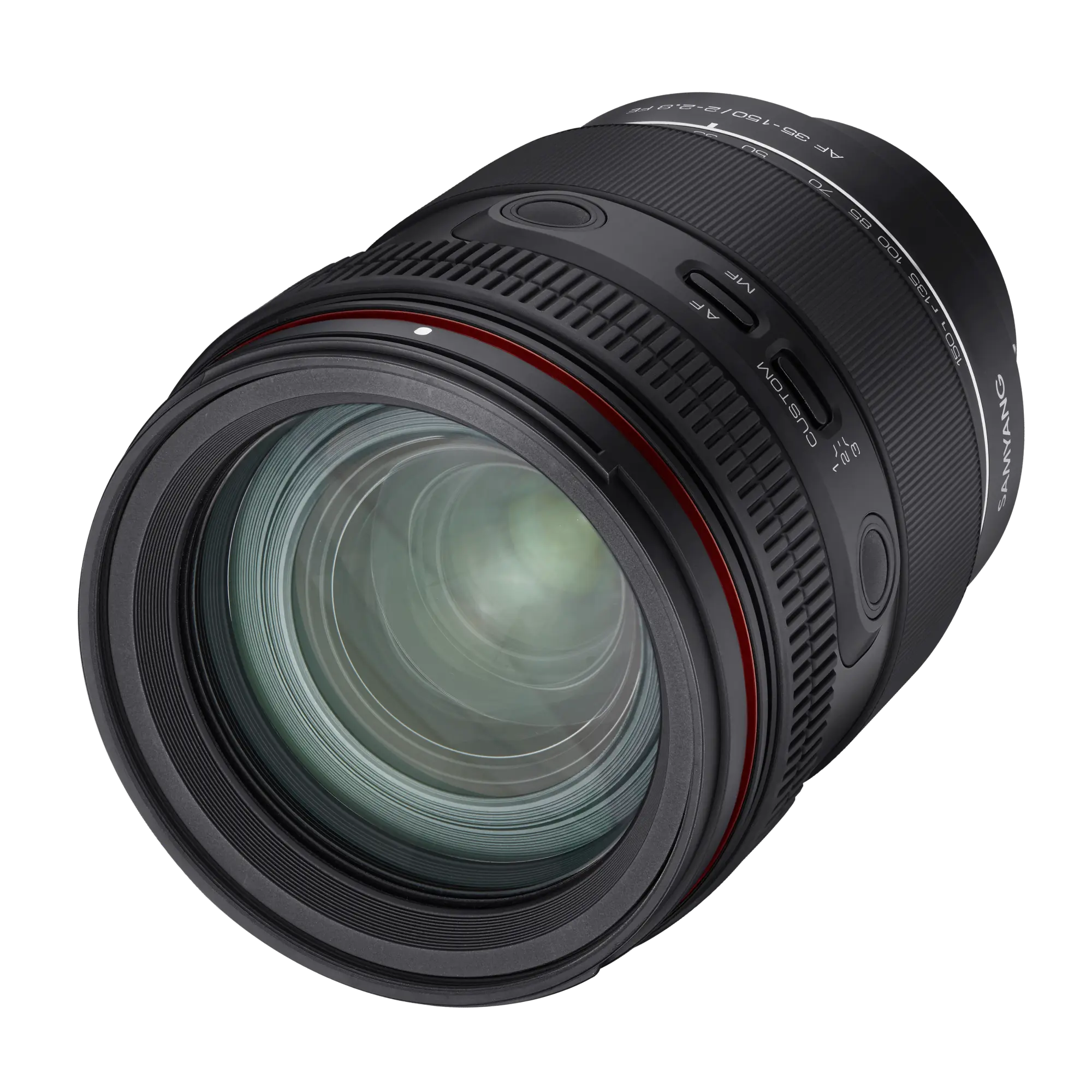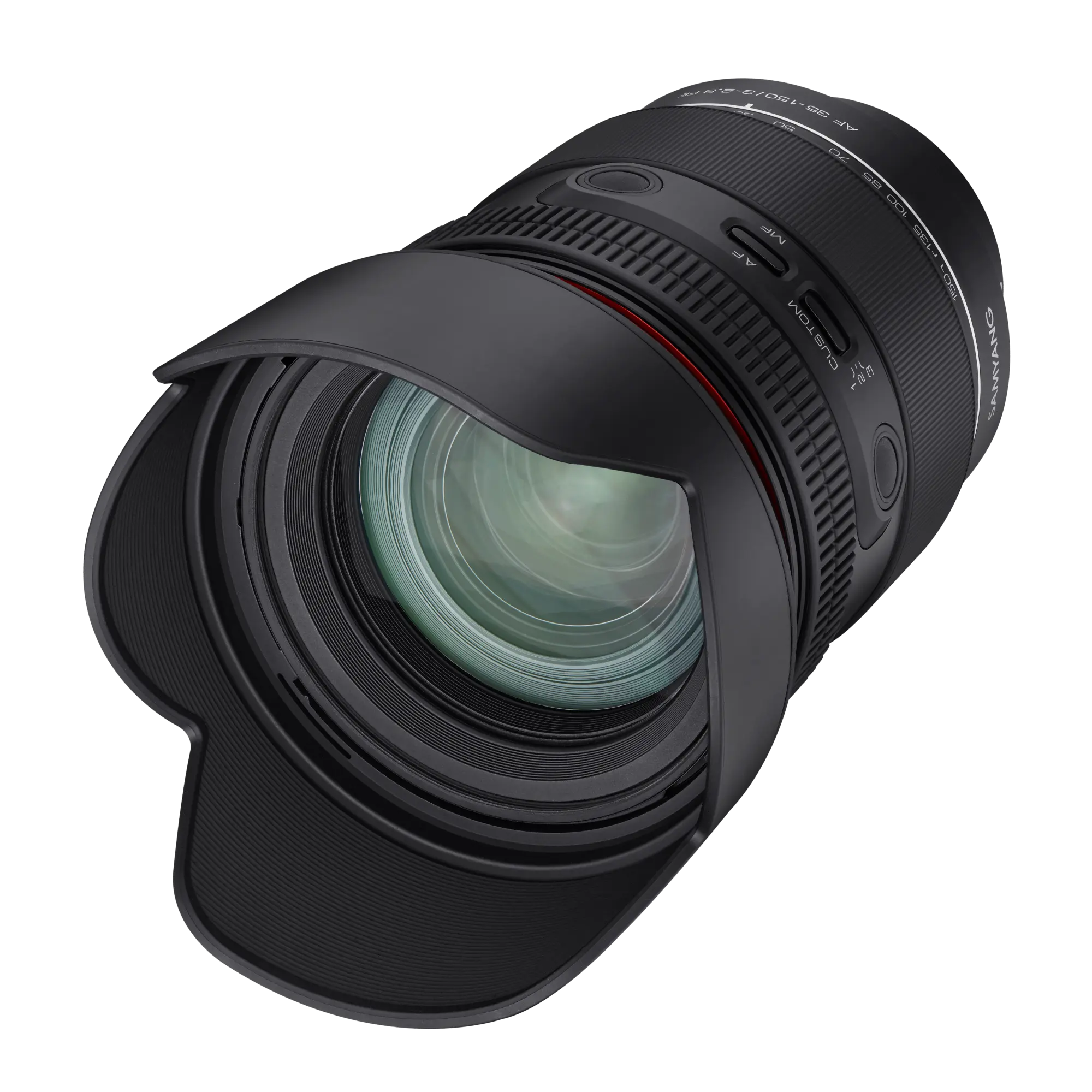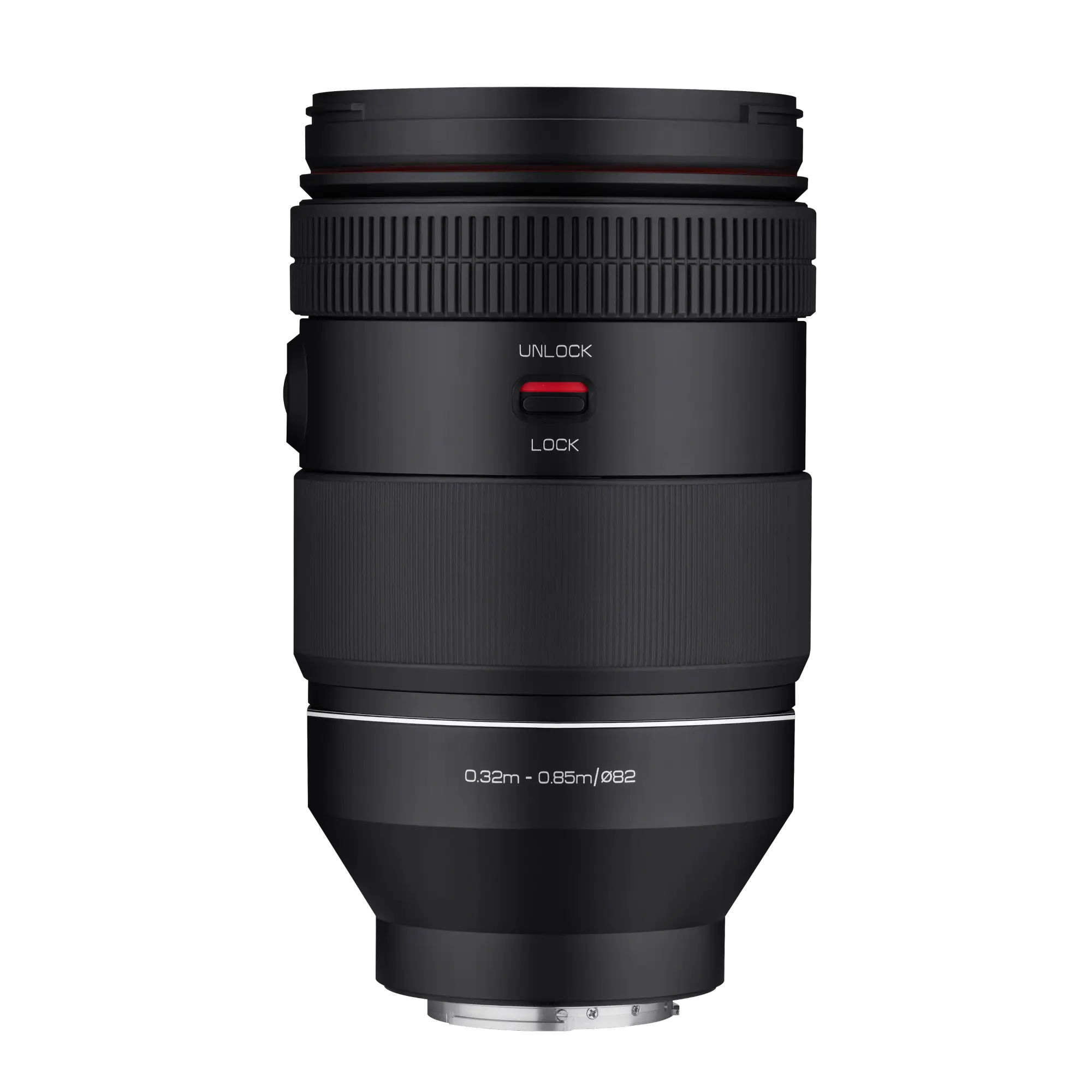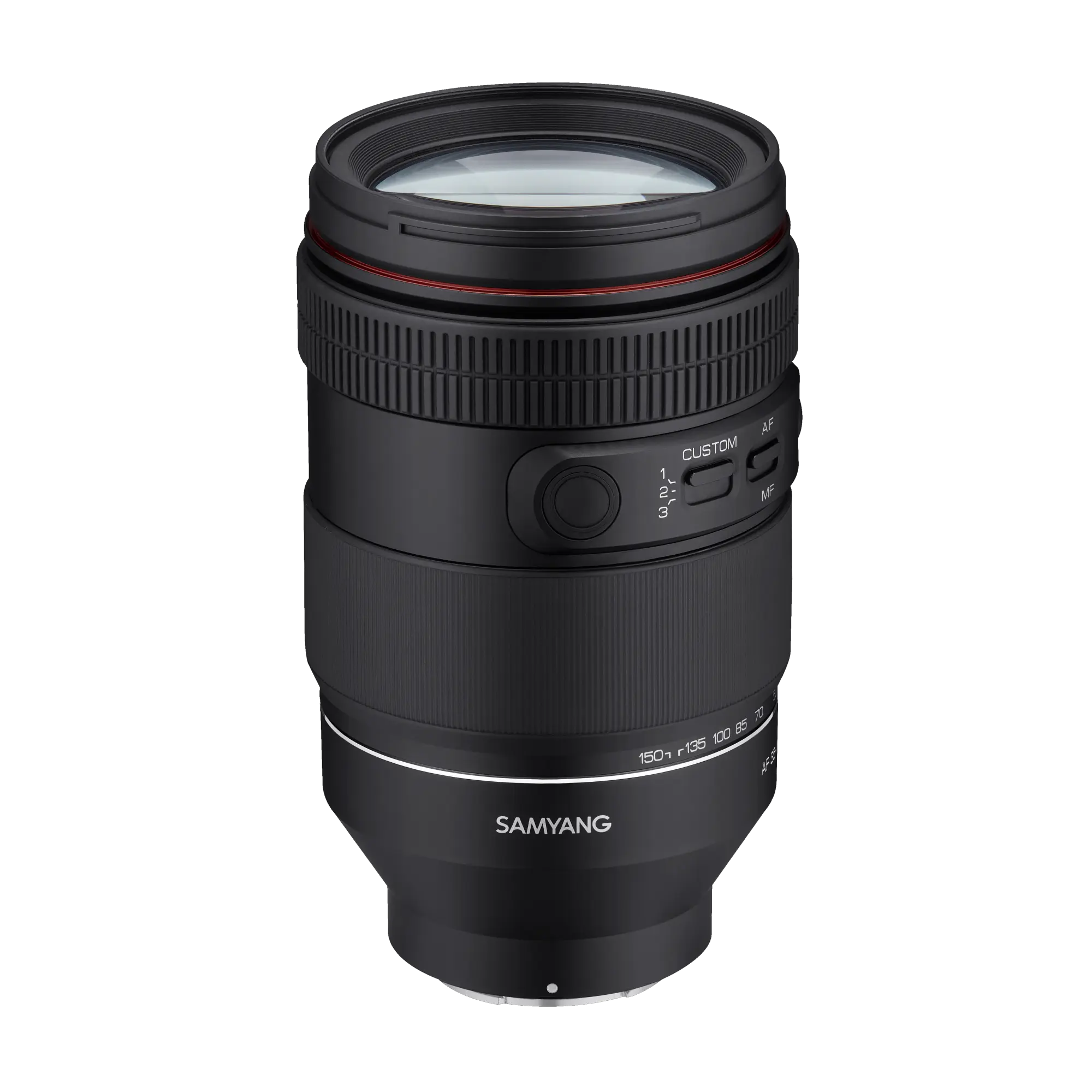Product Description
Samyang AF 35–150mm F2–2.8 FE Lens – Sony E Mount
The Ultimate All-Rounder Zoom. One Lens. Every Shot.
The Samyang 35–150mm AF F2–2.8 FE is a revolutionary all-in-one zoom lens for Sony full-frame mirrorless cameras, designed for creators who demand speed, sharpness, and versatility in every scenario. Covering five essential focal ranges — from wide-angle to telephoto — it’s the perfect companion for travel, portraiture, events, and filmmaking.
With its bright F2–F2.8 aperture, fast autofocus, and premium weather-sealed build, this lens brings professional performance to every situation — without ever needing to change lenses.

🌟 Key Features
-
Versatile focal range: 35mm to 150mm – covers wide, standard, and telephoto in one lens
-
Fast F2–F2.8 aperture: delivers stunning bokeh and low-light performance
-
Linear STM autofocus motor: fast, accurate, and near-silent AF for photo and video
-
Exceptional edge-to-edge sharpness across the entire zoom range
-
Modern 2nd-generation design with hidden red ring and ergonomic controls
-
Weather-sealed construction protects against dust, light rain, and snow
-
Ideal for hybrid creators: perfectly suited for both stills and cinematic video work

Versatility Without Compromise
The Samyang 35–150mm AF F2–2.8 FE is designed to replace multiple lenses in your kit. From sweeping landscapes at 35mm to compressed telephoto portraits at 150mm, it offers incredible flexibility while maintaining professional image quality.
This wide-to-telephoto zoom makes it the ultimate all-purpose lens — perfect for photographers and videographers who need to adapt quickly to changing environments, whether shooting travel adventures, weddings, or documentary projects.

Bright F2–F2.8 Aperture for Creative Freedom
With a wide F2 aperture at 35mm and F2.8 at 150mm, this lens ensures beautifully shallow depth of field and smooth, creamy bokeh across the entire range.
It performs brilliantly in low-light conditions, allowing for faster shutter speeds and lower ISO values — ideal for night scenes, indoor events, and cinematic video production.
The fast aperture also enhances subject separation, producing professional portrait-style results with dreamy background blur and soft falloff.

Outstanding Optical Performance
Built with Samyang’s advanced optical engineering, the 35–150mm F2–2.8 FE delivers exceptional sharpness and clarity across all focal lengths.
Its sophisticated optical design ensures minimal distortion and chromatic aberration, preserving detail and contrast even on high-resolution Sony sensors.
Whether shooting wide landscapes, close-up details, or telephoto portraits, the lens maintains consistent optical excellence from edge to edge.

Fast, Silent, and Accurate Autofocus
The lens features a Linear STM (Stepping Motor) that delivers fast, precise, and whisper-quiet focusing.
This ensures smooth subject tracking and effortless focus transitions — especially useful for video creators and event photographers who require reliability and discretion.
The autofocus system works seamlessly with Sony’s advanced AF modes, including Eye AF, Real-Time Tracking, and AF-C continuous shooting, ensuring every shot is tack-sharp.

Premium Build & Professional Handling
The Samyang 35–150mm AF F2–2.8 FE combines robust performance with refined design.
The lens body features Samyang’s new ‘Hidden Red Ring’ aesthetic, symbolising the brand’s evolution towards a sleeker, more modern identity.
Enhanced ergonomics, smooth control rings, and balanced weight distribution make this lens comfortable to use for extended periods, even when handheld.

Weather-Sealed and Built to Last
Engineered for real-world use, this lens includes comprehensive weather sealing to guard against light rain, snow, and dust.
Whether shooting outdoors in challenging weather or on location during long days, the 35–150mm ensures dependable performance without compromise.

The All-in-One Solution for Creators
This lens truly simplifies your gear setup — replacing multiple primes and zooms with one lens that does it all.
Its wide zoom range, fast aperture, and compact form make it ideal for creators who value efficiency, portability, and consistent image quality.
From cinematic storytelling to documentary coverage, the Samyang 35–150mm F2–2.8 FE is designed for those who need versatility without sacrificing creative control.

Specifications
| Specification | Details |
|---|---|
| Focal Length | 35–150mm |
| Maximum Aperture | F2 (wide) – F2.8 (telephoto) |
| Lens Mount | Sony E (Full Frame) |
| Autofocus Motor | Linear STM (Stepping Motor) |
| Optical Design | High-performance design for edge-to-edge sharpness |
| Aperture Blades | Circular diaphragm for smooth bokeh |
| Weather-Sealed | Yes |
| Construction Quality | Premium build with hidden red ring design |
| Weight | Lightweight and travel-friendly |
| Ideal For | Portraits, travel, events, landscapes, and hybrid video work |
What’s Included
-
Samyang 35–150mm AF F2–2.8 FE Lens
-
Front and Rear Lens Caps
-
Lens Hood
-
Soft Protective Pouch

Why Choose the Samyang 35–150mm AF F2–2.8 FE?
✔ One lens to cover everything from wide to telephoto
✔ Fast, bright aperture for creative flexibility and low-light excellence
✔ Professional optical design for exceptional sharpness
✔ Quiet, accurate autofocus for both stills and video
✔ Premium weather-sealed build for any shooting condition
✔ Perfect balance of performance, convenience, and style

Elevate Your Creative Potential
The Samyang 35–150mm AF F2–2.8 FE is the ultimate tool for creators who want to travel lighter, shoot faster, and capture more. With pro-level optics, flawless autofocus, and unmatched versatility, it’s the one lens that can truly do it all.
Simplify your kit and amplify your creativity — with the Samyang 35–150mm AF F2–2.8 FE for Sony E mount.
Payment & Security
Your payment information is processed securely. We do not store credit card details nor have access to your credit card information.






























